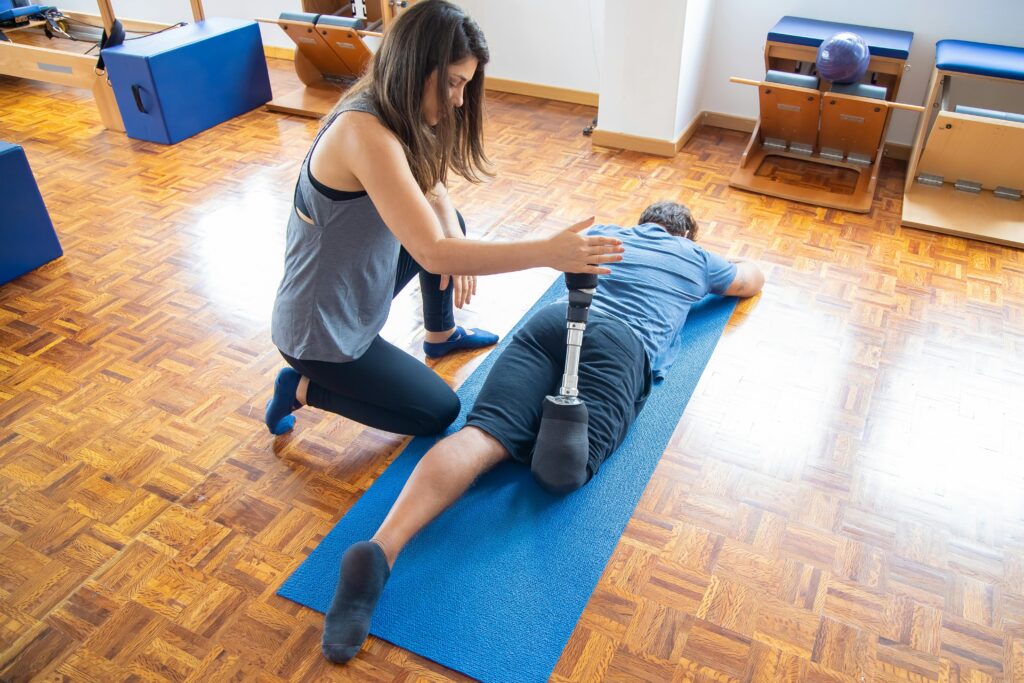If you are in the field of physical therapy, whether as a new student or a practicing therapist, you may have heard the news: the qualifications to become a physical therapist in the United States are changing. A profession that used to require a Masters of Physical Therapy (MPT) level education now requires a Doctor of Physical Therapy (DPT). The American Physical Therapy Association (APTA) has made it a goal for all physical therapists to have this level of certification by the year 2020 – which is coming up in less than six months!
If you need help navigating this change in physical therapy certification or have a few questions, read on! We have outlined the most important facts that you need to know to stay up to date.
What is the Difference Between MPT & DPT?
Even though a DPT now allows individuals to practice the exact same profession as an MPT once did, the difference between the two degrees extends far beyond semantics.
One of the main differences between the Masters and the Doctor is the duration of the degree. A typical MPT program is two years long with fifteen weeks of clinical experience, which had been the norm for years. In comparison, a typical DPT program is three years long and requires one full year of clinical experience. A program with one added year as well as almost six times the amount of clinical experience arguably gives students much better preparation for entering the workforce.
Furthermore, typical MPT programs tend to focus solely on physical therapy in terms the realms of medicine they explore, whereas DPT programs will dive much deeper. A typical DPT program may include, but is not limited to, “physical health systems evaluation and analysis, pharmacology, imaging, healthcare management, preventive medicine, well-being, and pathology”. In short, the preparedness of someone with a DPT will likely be greater than that of someone with an MPT.
Can I still Practice Without a DPT?
If you are already practicing as a physical therapist with a different level of certification, such as a Bachelors or a Masters, you can continue to practice. However, if you are a physical therapy student who has not yet graduated, a DPT will be required in order to pursue a profession in the field. The APTA does, however, encourage those with a BPT or MPT to pursue a DPT. It will not only grant a higher level of authority than the previous degrees, but it will soon be commonplace among practicing physical therapists. It is not yet determined whether the APTA will make earning a DPT mandatory for all practicing physical therapists at some point in the future.
In keeping with the change, MPT programs are no longer offered in any schools in the US. While this option is no longer available to students in the United States, this may not be the case elsewhere in the world.
Why are the Physical Therapy Certifications Changing?
The physical therapy certification levels are changing for a number of reasons. The main reason being that the APTA wants every new practicing physical therapist to be on the doctorate level. Why? It grants them more authority to perform a number of functions usually reserved for physicians, such as billing for compensation or starting their own practices. This degree allows physical therapists to be autonomous healthcare providers and essentially takes out the middleman between physical therapists and physicians, streamlining the processes. Some also argue that having the title include the word ‘doctor’ allows for patients and peers to recognize the time and energy put into completing this kind of program.
How Do I Ensure I Get into a DPT Program so I Can Become a PT?
Physical therapists are one of the most in demand healthcare professions right now in the United States. The Bureau of Labor Statistics predicts the profession will increase by almost 30% by 2026, which is much faster than all occupations overall. However, with the changing certifications to become a physical therapist evolving to be more intensive than they used to be, it is yet to be seen if schools will be more lenient or less lenient with who they allow into their programs.
Regardless, there are things that can be done to set you apart from other applicants when trying to get into a DPT program. Having great grades is a given, but make sure you have a well-rounded application that presents you as a soon-to-be well-rounded healthcare provider. You will also want to highlight your clinical experience (if you have any yet), and having stellar references will always help your chances!
Are you looking for an amazing physical therapist position? Radius Staffing Solutions is always hiring for great PTs all across the country, so check out our job board now to see what opportunities are open! The right job for you is out there – reach out to a recruiter today to find it!











